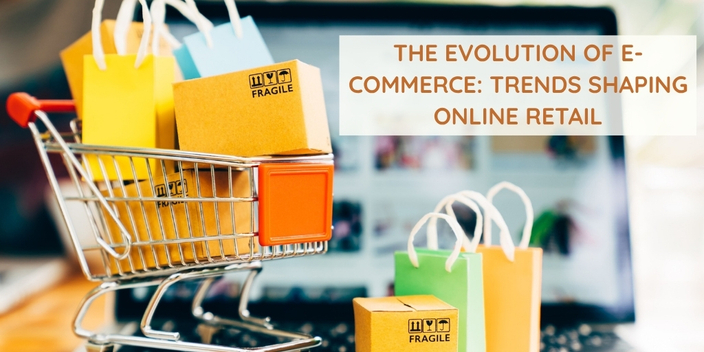A few years back, shopping meant walking into a store, strolling with a trolley, and standing in long queues for billing. Today, if we want to shop, we just need to tap on the item we like and it will be at our doorstep in a few minutes/days. Welcome to the world of e-commerce, a digital transformation which not only shaped our shopping experience but also how businesses operate, connect, and compete.
As we move into 2026, the e-commerce landscape continues to grow at an incredibly high speed. Let us take a quick look at how technology, consumer behavior, and innovation are reshaping the future of online retail.
From Digital Stores to Seamless Ecosystems
The beginning of e-commerce began with simple online stores i.e., static websites selling a limited range of products. Currently it is a more of a dynamic, data-driven ecosystem which combines logistics, social media, payments systems, and AI. E-commerce platforms now no longer just offer products, they create experiences. Personalized recommendation, one click checkouts, and fast delivery have become bare minimum rather than luxuries.
The modern buyers not only look for convenience but also connection. To build a successful brand, businesses should mix technology with empathy, looking after the audience's demand and delivering value beyond transactions.
1. The Rise of Social Commerce
The merger of social media and ecommerce has driven the biggest shift. Social media platforms have now turned inspiration into instant purchases. With “shop now” buttons and shoppable posts, users no longer need to leave their favorite apps to buy what they love.
This ongoing trend is called “social commerce”, it combines storytelling and sales. Influencers, short-form videos, and user-generated content create authenticity, while integrated payment systems make checkout effortless. The brands who understand this intersection of engagement and convenience are making big in the current digital space.
2. Personalization Through AI and Data
In the online retail market, the real gold is data and AI is the miner. Starting from predicting customer preferences to upgrading inventory, AI-driven insights boosts standings in the competitive market. Personalized emails, product suggestions, and dynamic pricing are all powered by algorithms that learn from browsing behavior. Buyers want their experience to be seamless and hassle-free, that's what exactly AI does.
Taking notes of each consumer behavior, sellers will be able to not only customize products but also experiences.
3. The Sustainability Shift
The modern consumers believe in shopping for a better planet. Eco-conscious shopping has now turned into a necessity. Brands give special attention to sustainable packaging, ethical sourcing, and carbon-neutral delivery. The new shoppers are giving their loyalties to retailers who demonstrate transparency and responsibility.
In 2025, sustainability isn’t just a moral choice — it’s a strategic one.
4. The Power of Mobile and Voice Commerce
With smartphones becoming digital lifelines, it’s no surprise that mobile commerce (m-commerce) dominates online retail. Mobile wallets, easy app navigation, quick payment options have made mobile shopping frictionless. The next frontier in this line is voice commerce. Smart assistants turn spoken commands into completed orders. might soon replace the tap of a button.
5. AR, VR, and the Metaverse Shopping Experience
The line between digital and physical retail is blurring. Augmented Reality enables the consumer to “try before buy” like trying on shades virtually before actually buying them. Virtual Reality (VR) and metaverse stores go even further, offering immersive shopping environments where users can interact with products as if they were in a real shop.
This experimental shopping revolution allows brands to explore new opportunities to engage consumers in creative and memorable ways.
The Road Ahead
E-commerce is no longer just about selling products — it’s about building relationships, experiences, and trust. As digital technology continues to evolve, the winners will be those who stay agile, listen to their customers, and innovate relentlessly.
In the future, we won’t talk about online retail as something separate from retail — because they’ll be one and the same.
The evolution of e-commerce isn’t slowing down — it’s accelerating. And the question isn’t whether you’ll shop online, but how, when, and in which virtual world you’ll do it.

